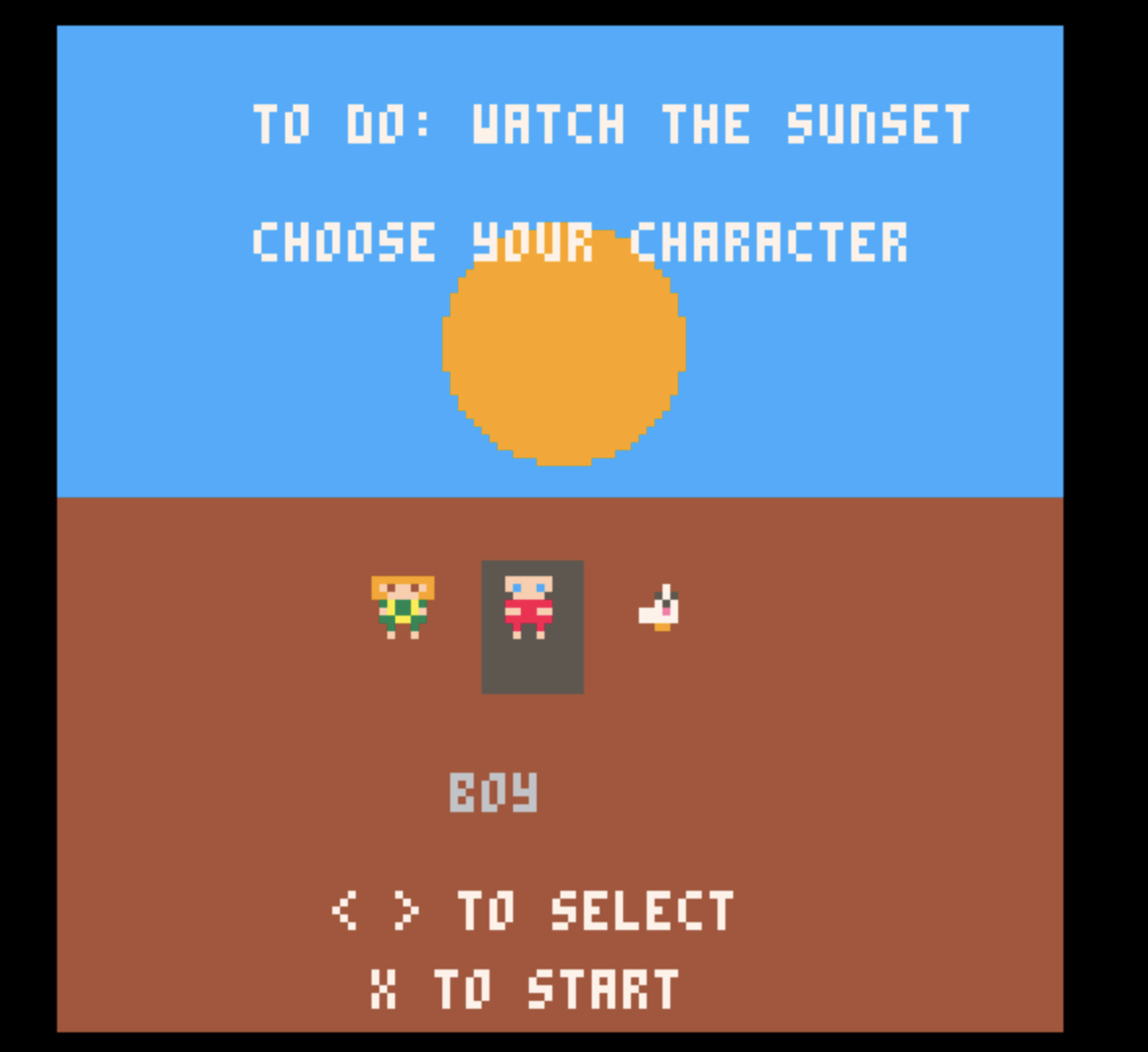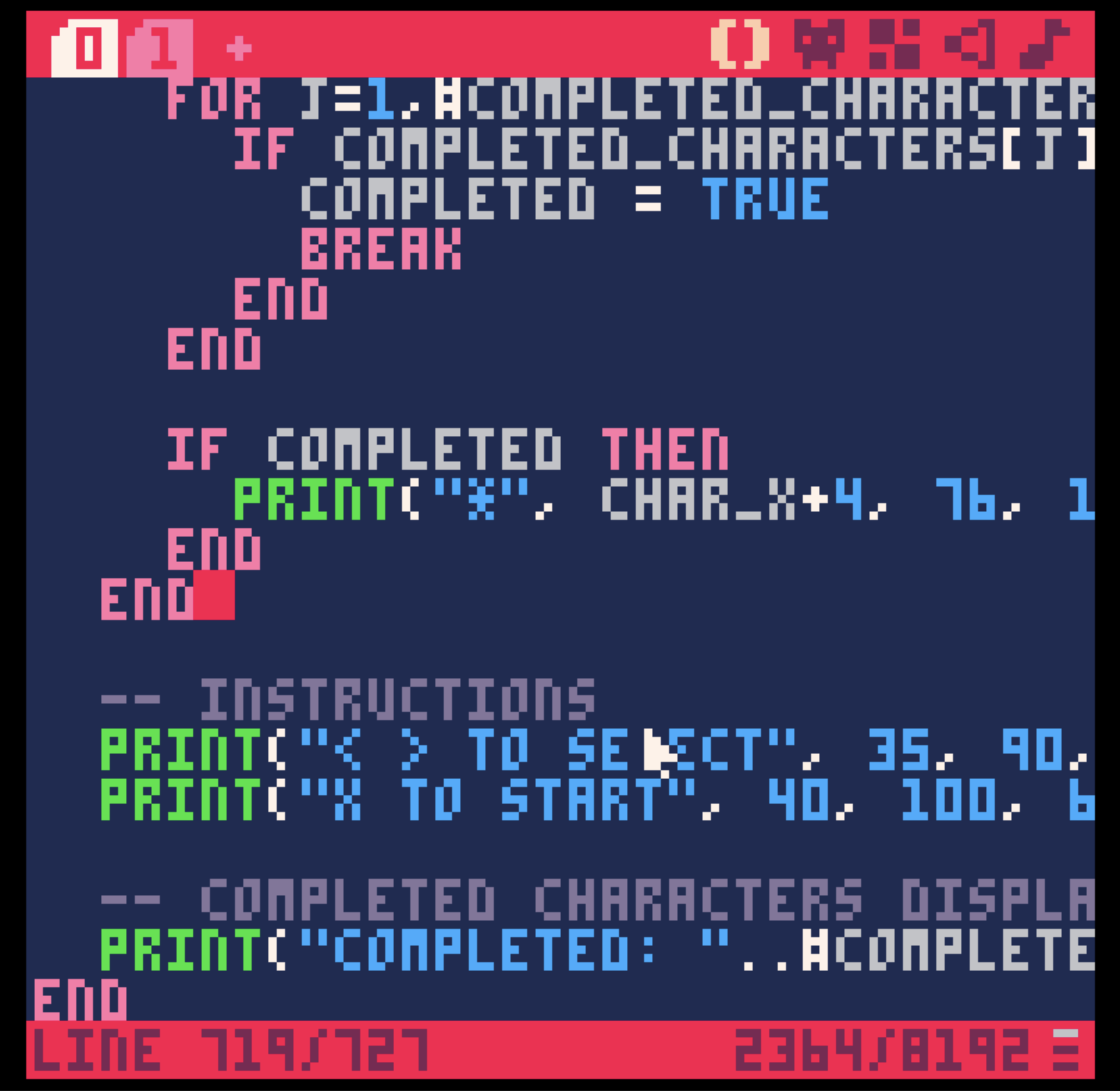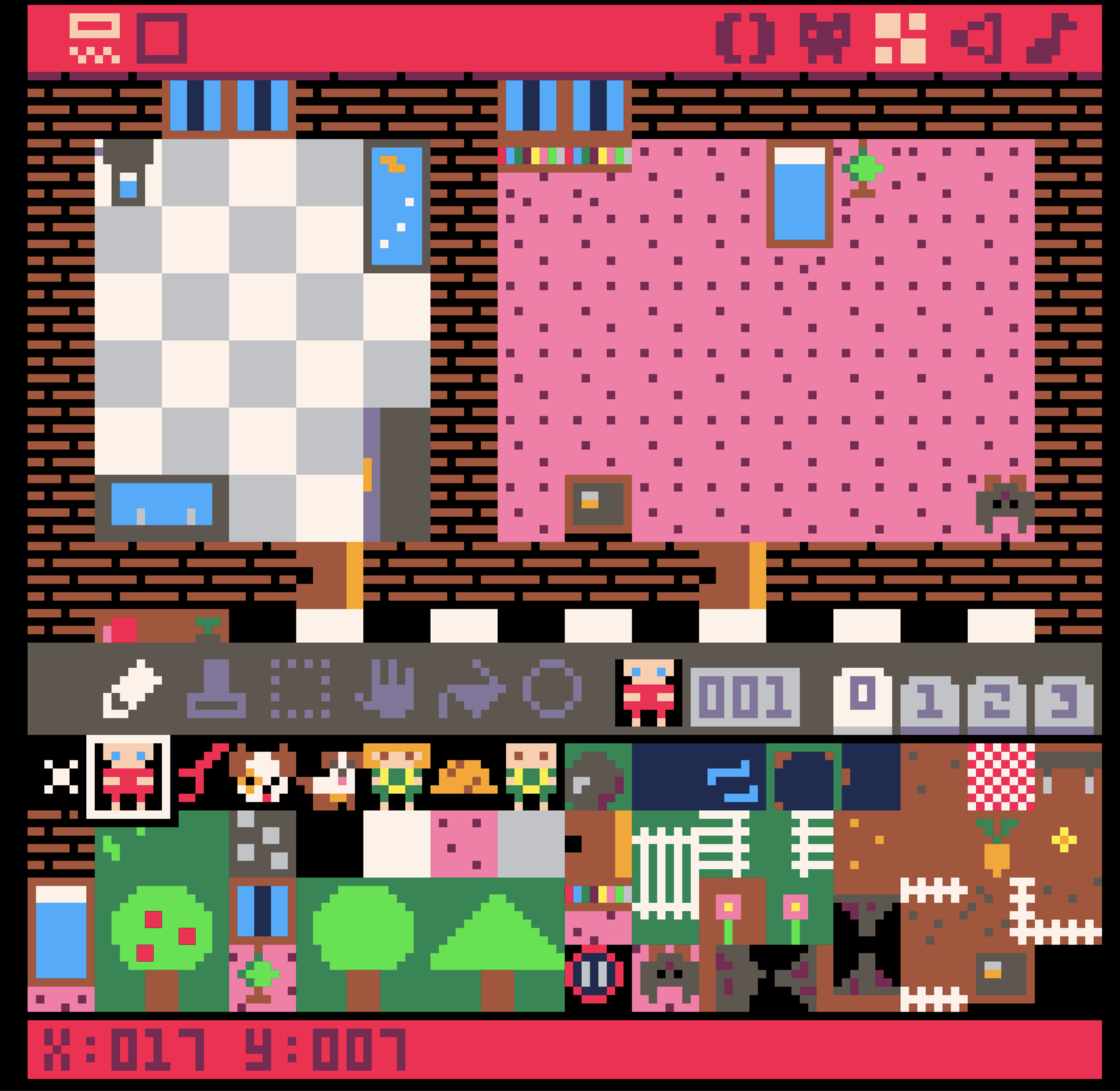
Sunset Stories: Interconnections in a Tiny PICO-8 Game
When I play games, I’m always amazed by how the mechanics, choices, and storylines all fit together like a perfectly designed puzzle. How did the creators come up with that? How do they anticipate the player’s actions and build a world that reacts? Earlier this year, I got a little closer to the answer — because my brother and I started a small creative challenge:
Every quarter, we make a tiny game for each other in PICO-8.
It’s a low-stakes, playful way to stay creative and connected — a kind of ritual that gives us structure, accountability, and a reason to keep making things just for the joy of it. And this round, I made Sunset Stories — a cozy narrative microgame where each character has a small task to complete before joining the others to watch the sunset.
It was inspired by my daily bike rides home with my son. We’d pass people gathered on a hill, watching the sun dip into the ocean. I’d think, “That looks so peaceful.” But I never stopped—there was always dinner to make, bedtime to wrangle. And so the sunset slipped by, again and again.
That longing became the seed for Sunset Stories — a game where characters pause, finish their little tasks, and finally slow down to enjoy the sunset.
And though I had three months to make it, I started (of course) in the final week. Once I got going, though, it clicked.
I began with the boy. Maybe because I was thinking of my son. He needed a task before he could go watch the sunset. I gave him a dog — and decided he’d have to walk it first. Easy, right? But it felt too simple. So I added a twist: he needs a leash. Without it, the dog runs away. Now the player has to find the leash, then reunite the boy and dog. A timer adds gentle pressure. It became a tiny story with a beginning, middle, and end.
From there, the world grew.
The dog’s task? Chase the gardener and steal their hat. Which meant the gardener’s task became finding that hat — but only if the dog had played first. Suddenly, these small stories started to intertwine.
Each new character added a layer. The bus driver, for example, won’t arrive at the stop until the boy has walked his dog — maybe because the dog barking spooks the bus away unless it’s calmly on a leash. Suddenly, the bus driver’s task (picking up passengers and parking the bus for sunset) is blocked unless the boy plays first. And then there’s the grandmother, who bakes cookies and brings them to the bus driver as a thank-you for waiting for her - but this can only happen if the bus has arrived. These small dependencies created a soft web of connection between runs. The game started to feel alive — like these characters existed whether or not you were playing them.

🌅 The Concept
In Sunset Stories, you choose a character — the boy, the dog, the gardener, or the grandmother.
Each has a short task to complete before joining the others at sunset.
But here’s the cozy twist:
What one character does changes what the others can do.
- The dog steals the gardener’s hat.
- The gardener must find it — but only if the dog already played.
- The bus driver won’t arrive unless the boy has walked the dog.
- The grandmother bakes cookies and shares them with the bus driver, but only if the bus has arrived.
The world becomes more layered the more you play, building soft connections across each tiny vignette.
🛠️ The Tech
I built the game entirely in PICO-8 — a fantasy console with pixel-perfect constraints and a nostalgic charm that forces creative focus.

To support development, I leaned on AI tools like ChatGPT and Windsurf.
The story and vision were entirely mine — but AI acted as a friendly pair programmer, helping debug code, explain systems, and keep me in flow.
This approach let me focus on creativity while learning a ton about game logic, tilemaps, and interaction design along the way.
🧠 What I Learned
- Working within constraints makes you think clearly. PICO-8 forces you to write tight, modular logic
- Interconnected gameplay is deeply rewarding — and surprisingly easy to test when your scope is small..
- Creative rituals matter. Making this game for my brother gave it purpose, even before it was “done.”
✨ What’s Next
So far, I’ve implemented the boy, the dog, and the gardener. A new quarter has officially started — which means it’s technically time for a new game (though I’m still figuring out what that will be). But Sunset Stories still calls to me. I’d love to circle back and finish it by adding the bus driver and the grandmother. I also designed the overworld and landscape tilemaps, but didn’t get them into the version I shared with my brother. Collision detection was trickier than expected, and I ran out of time before the deadline.
The process of building it reminded me of something I used to tell my improv students: you build the world brick by brick. That’s how this game came to life — one interaction at a time, following curiosity and asking, “What happens next?” It’s the same question I ask when I play games and marvel at how interconnected they are. But this time, I got to experience it from the other side — not by planning everything in advance, but by listening, responding, and letting the world unfold one beat at a time. Just like in improv, the magic comes when you trust the process, stay curious, and let each new choice be informed by what already exists.
And in the end, I found answers to that original question I always ask as a player — how do creators come up with this stuff? Not all at once. Not from a perfect plan. But by starting small, following inspiration, and building one brick at a time.
It’s not groundbreaking — but I’m proud of it. Sunset Stories is my first fully original game. Not a tutorial project. Not a Pong clone. Just something I dreamed up and brought to life, from concept to code.
Sunset Stories is a love letter to small moments, interconnected lives, and the quiet joy of slowing down.
Thanks for reading.
